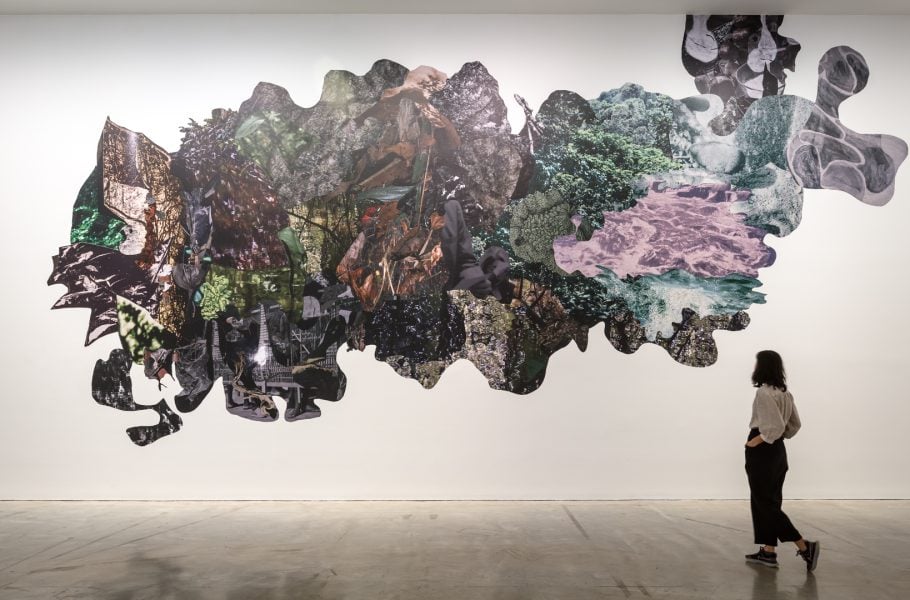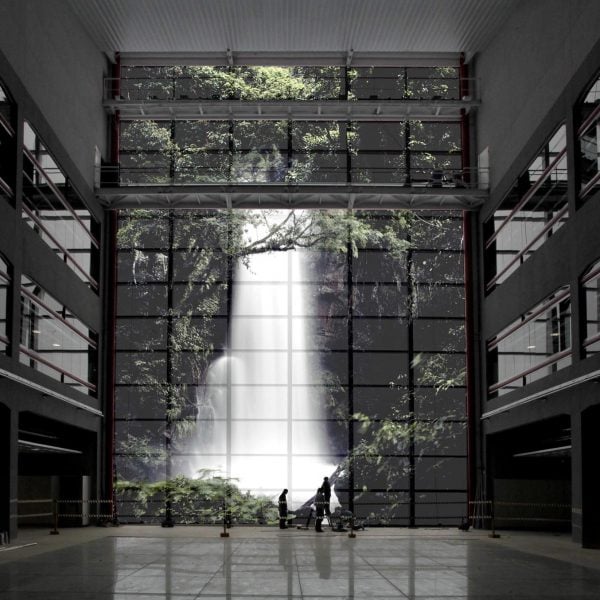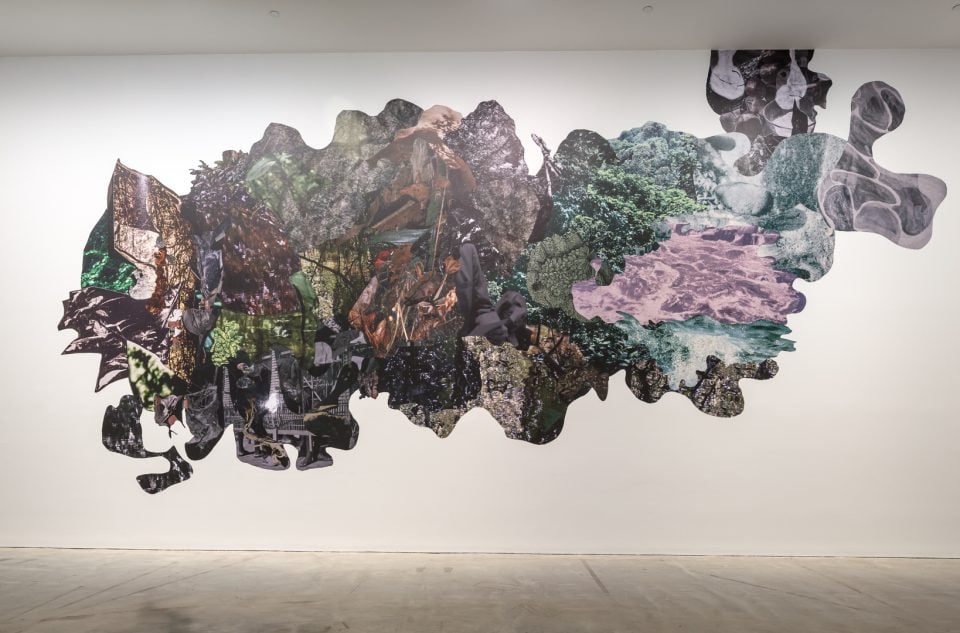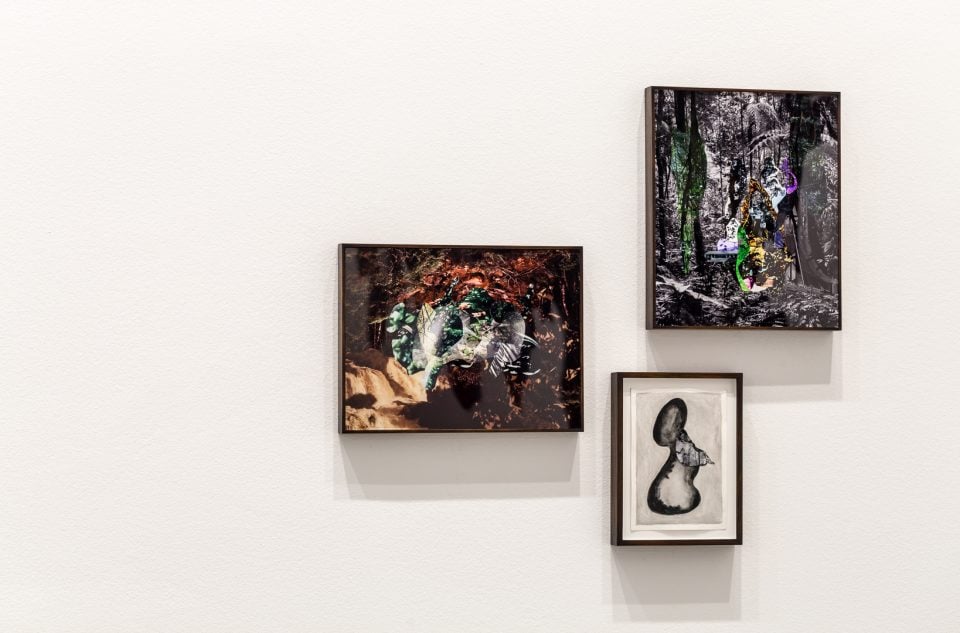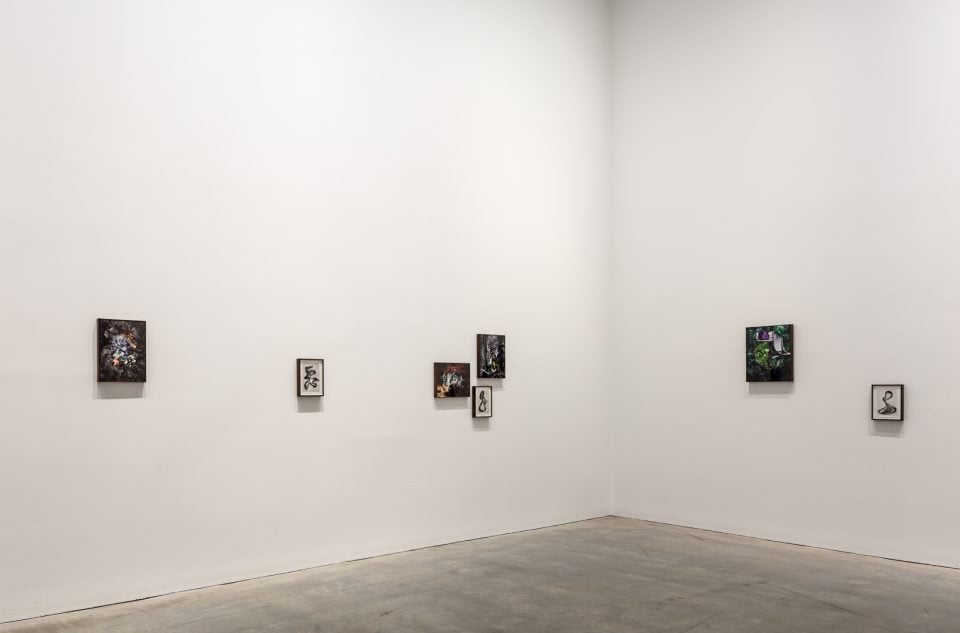TAPEÚBA, 2021
ink-jet print, mounted on plexiglass
Courtesy the artist and Galeria Joan Prats, Barcelona
TIPIOCA, 2019
ink-jet print, mounted on plexiglass
Courtesy the artist and Galeria Luciana Brito, São Paulo
KUTUIM, 2022
ink-jet print, mounted on plexiglass
Courtesy the artist and Galeria Joan Prats, Barcelona
TAPYINDÉ, 2022
ink-jet print, mounted on plexiglass
Courtesy the artist and Bendana Pinel Art Contemporain, Paris
INTÁ, 2020
watercolor on canson paper
Courtesy the artist and Galeria Luciana Brito, São Paulo
INKÔ, 2020
watercolor on canson paper
Courtesy the artist and Galeria Luciana Brito, São Paulo
TIPUATA, 2020
watercolor on canson paper
Courtesy the artist and Galeria Luciana Brito, São Paulo
Commissioned by the Biennale of Sydney with assistance from the Consulate General of Brazil in Sydney
MUNDUS SUBTERRANEUS, 2022
UV print on wall
Courtesy the artist and Bendana Pinel Art Contemporain, Paris
Commissioned by the Biennale of Sydney with assistance from the Consulate General of Brazil in Sydney
‘I always want to speak about the system. It’s not all beautiful images; I want to speak about the very sad relationship between the Government and the people of Brazil.’
– Caio Reisewitz
One of Brazil’s most acclaimed photographers, Caio Reisewitz creates collages constructed from his own photographs as well as images from historical archives, print media and the Internet. They highlight issues of land and power, two areas that are central to his country’s history and identity.
MUNDUS SUBTERRANEUS is a large-scale collage created for the 23rd Biennale of Sydney, that includes photographic details of Brazil’s forests and rivers juxtaposed with images of: palafitas, houses built on stilts over water to protect from flooding; jackfruit, a nutrient source for many that is under threat from deforestation; the building of the Transamazônica, a system of highways devised in the 1970s to destroy huge swathes of the Amazon for settlement and agriculture; and far-right politicians who seek to capitalise on Brazil’s natural resources, passing legislation to decimate forests and privatise water.
Appearing throughout Reisewitz’s work are symbolic references to systems of power that maintain and amplify the corruption and socio-economic disparities rife in Brazil. Architecture is a key presence in this regard, most notably from the highly ornamental Baroque style introduced by Catholic missionaries aligned with Portugese colonisers, and the modern minimalist approach of Oscar Niemeyer a few centuries later, who designed much of the federal capital Brasília.
MUNDUS SUBTERRANEUS borrows its title from a seventeenth-century book by German Jesuit scholar Athanasius Kircher who wrote about interconnected systems of fire and water above and below the Earth’s surface. Reisewitz adopts ‘subterranean world’ as a metaphor for the complex issues facing contemporary Brazil.
Click here to view the original Mundus Subterraneaus
